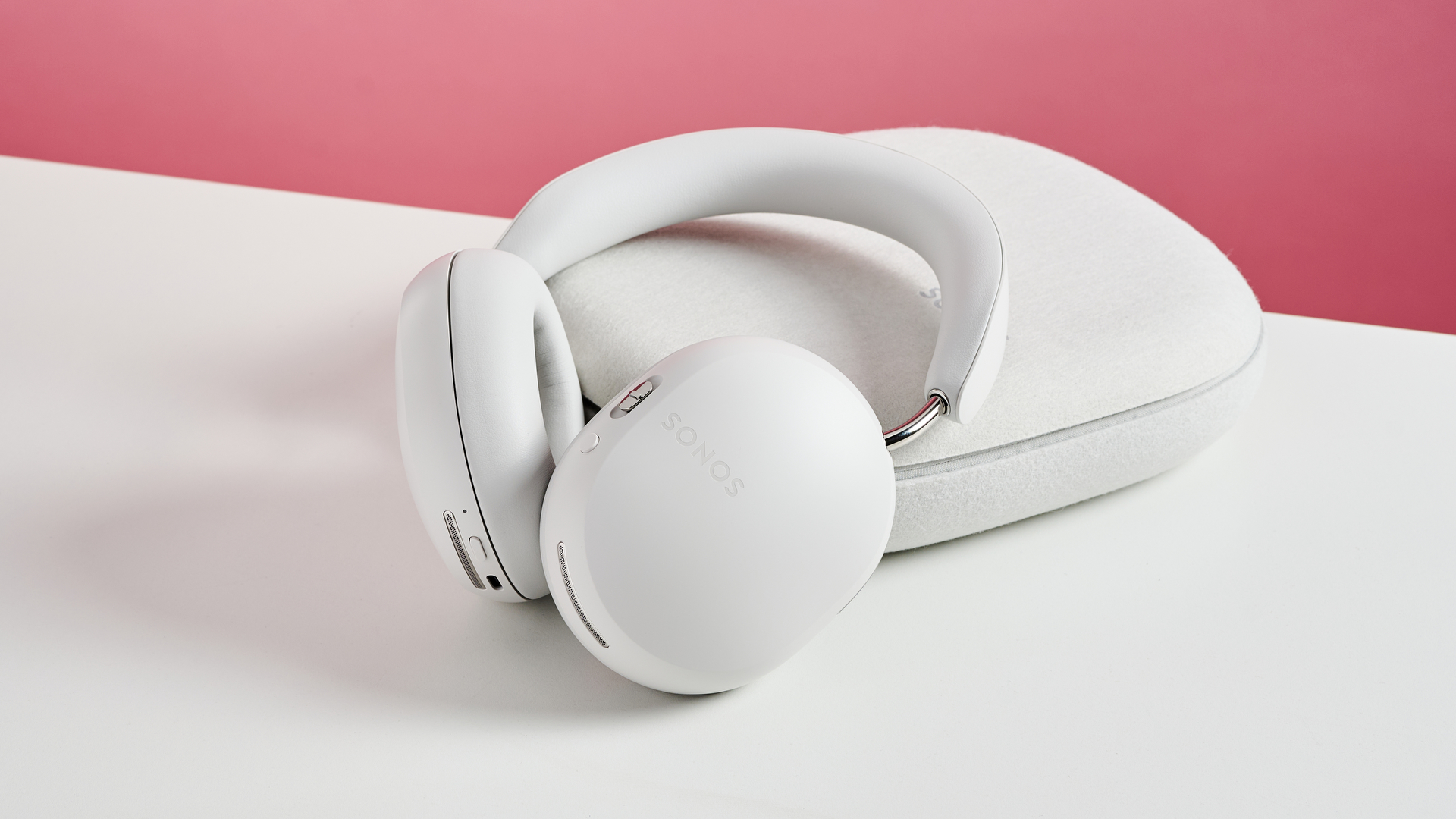
Sonos Ace: Two-minute review
Sonos Ace are the first headphones from a company that became synonymous with modern wireless audio, and so have been much desired and long-rumored (and Sonos told me it's been tinkering with the idea essentially since the company was founded). Sonos's strength is its ecosystem combined with strong sound quality, and so we expected the headphones to make the most of these elements.
And yet, that meant the Sonos Ace headphones disappointed some fans from the moment they were announced. They don't work with your Sonos Wi-Fi setup and combine with the best Sonos speakers in the way that people expected – for the most part, you'll use them just like the other challengers to be the best noise cancelling headphones. If you've invested in a Sonos-connected turntable such as the Victrola Steam Carbon, or plugged one of the best turntables into your system using a line-in port, this might be a big disappointment.
But the Sonos Ace do deliver some Sonos ecosystem magic, if you have a Sonos soundbar. The Sonos Ace can pair with your Sonos Arc (support for other soundbars is promised via update in later summer or fall 2024) to instantly and seamlessly take the sound from your 'bar and pump it into your ears, using head-tracked 3D spatial audio. Thus, you can listen to your TV at night without disturbing anyone in the house; it works perfectly, and sounds absolutely fantastic. Dolby Atmos spatial audio support extends to Bluetooth devices too, and this is easily the best trick the Ace headphones have up their sleeve. I think they're my favorite headphones for movies to date.
However, when it comes to music, I'm not so effusive. They sound good, but they're surprisingly constrained while also being quite aggressive, and this can take the edge off their rich bass and detail at times. They're also unusually light on naturalistic reproduction, favoring a sound so warm, one might call it hot.
Their strong feature list includes highly effective noise cancellation, aptX and USB-C lossless audio support, and smart features such as wear-detection – though the Sonos app doesn't enable as much customization of the sound or ANC as rivals do.
And we have mixed reports from our testers on their comfort. Some on the TechRadar team rate them as being among the most comfortable headphones of all time; I found them to press on my glasses too much, so I couldn't wear them for more than an hour at a time.
There are lots of nits being picked there, so you can read the full review below for more nuance. These are good headphones, especially if you want to watch a lot of movies with them (and doubly so if you have a Sonos Arc soundbar). But the Bose QuietComfort Ultra Headphones offer better noise cancellation, better audio quality, and a more comfortable fit at the same price (and are regularly discounted), so if music is your main use, I'd lean that way.
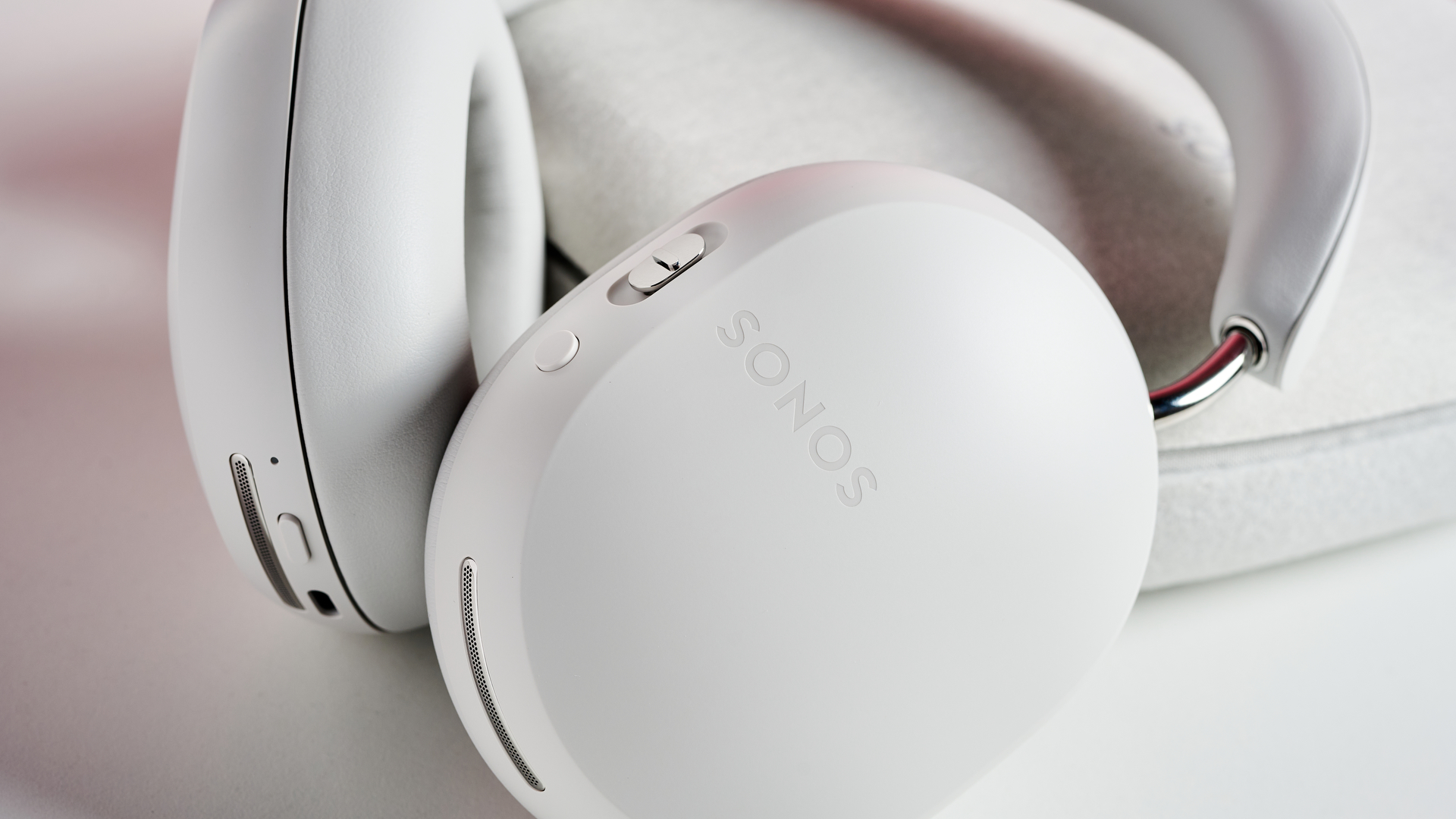
Sonos Ace review: Price & release date
- $449 / £449 / AU$699 official price
- Released in June 2024
- Premium – but not out of line with competition
Released in June 2024, with an official price of $449 / £449 / AU$699, the Sonos Ace come crashing in at the super-premium end of the wireless headphones world, but are not out of line with the high-quality competition.
That's about the same as the Bose QuietComfort Ultra Headphones, which cost $429 / £449 / AU$649, and is slightly less than Apple AirPods Max's official price, which is $549 / £549 / AU$899 (though these days you shouldn't really pay over $449 for them given how often they're on sale) – and Apple's headphones in particular don't seem to have had many issues with popularity at the price, given how many you see around major cities.
While there's a major step up to the Sonos Ace's price from the likes of the Sony WH-1000XM5 ($329 / £299 / AU$549) or the Sennheiser Momentum 4 Wireless ($299 / £309 / AU$380), it's not out of line with the rest of industry at all.
Sonos Ace review: Specs
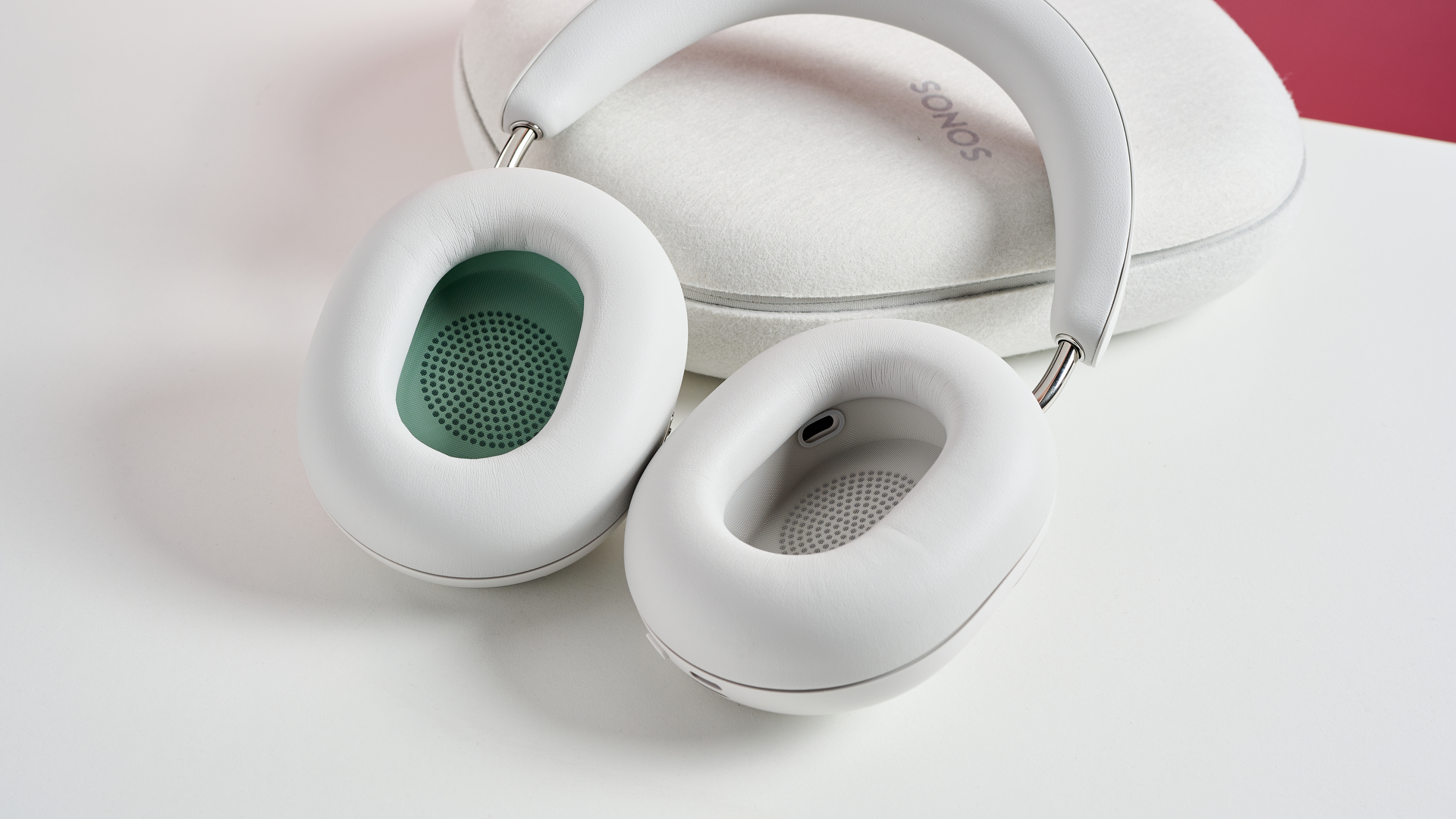
Sonos Ace review: Features
- Hi-Res Audio over USB-C, 3.5mm or aptX/Snapdragon Sound
- Dolby Atmos spatial audio over Bluetooth or from Sonos Arc
- Strong noise cancellation, but no adjustability
The Sonos Arc come well-packed with features, helping to justify their price, ranging from basics like good active noise cancellation with a transparency mode, up to extremely well-specced spatial audio support, including smart home theater options.
Active noise cancellation is one of the least surprising, and is very well done. With the powerful sound of the headphones (which we'll discuss in the next section) overlaying it, the noise cancellation here is seriously effective, suppressing both low and high frequency sounds drastically and leaving the sound as the star. In direct comparison, the Bose QuietComfort Ultra Headphones are more effective, particularly at stopping voices breaking through, but with music blaring the difference isn't large at all.
The transparency mode, which Sonos calls Aware mode, lets a ton of sound in – I'd argue a little too much, in fact. I'm not sure I need to be able to hear people's feet shuffling on the floor like this… I prefer a these modes when they balance what I need to hear (traffic, voices) with the music a little more judiciously. However, you can't argue with its fundamental effectiveness.
It's a shame that there's no scope to tweak these modes, though. High-end equivalents from Bose, Sony and Sennheiser offer in-app sliders, or in some cases enable you to create ANC modes with different levels of noise-cancellation power, for different uses. There's nothing like that from Sonos here – it's on, off, or Aware.
Indeed, there's not a lot of customization here. In the Sonos app, there's a basic three-band EQ, and a 'Loudness' setting to boost bass and treble at low volumes (not really necessary). Beyond that, the app mostly gives you options to turn the other features on and off. That includes the wear detection (which auto-pauses them when you take them off), head tracking, spatial audio, and multi-point Bluetooth for connecting to two devices at once for easy switching.
Connectivity options abound, though. You've got regular Bluetooth audio, aptX Adaptive with Snapdragon Sound support, and Wi-Fi for wireless connections (but don't get too excited about the Wi-Fi – I'll come back to that shortly). For wired use, there's a USB-C port that allows for high-end lossless Hi-Res Audio, and 3.5mm wired using an included USB-C-to-3.5mm adapter. This is also the charging port, naturally.
So, the Wi-Fi. It's here, and when we heard rumors about the Sonos Ace, we assumed that it would be used for connecting to the Sonos multi-room ecosystem, so you could listen in Hi-Res quality to music sources via the app, or to any turntables or other hi-fi gear connected to your Sonos system. Perhaps with a system like that used by the Sonos Roam, where music is automatically handed to Bluetooth when you leave the house, and fires onto your big speakers when you return.
But that's not the case. Sonos told me that it may be technically possible in the future if enough people want it, but isn't on the product plan currently.
This kind of audio handoff is something that was achieved for the first time in headphones in October 2022, with the Bowers & Wilkins PX8. Whatever's coming through those cans could simply transfer to your Zeppelin, Formation Wedge or other supported B&W speakers when you walk through the door.
However, the Sonos Ace do connect to other Sonos products in one key way. In the Sonos app, you can pair your Ace headphones with a Sonos Arc soundbar, and then just push a button on the headphones any time you're home and watching TV to instantly switch the found from coming out of your soundbar to coming from your headphones. This includes Dolby Atmos and surround sound, which is turned into a 3D audio format the headphones can understand by the soundbar, and the headphones apply head tracking (I had to turn this on in the app, rather than it be on by default) so that you can watch on your headphones, but it still feels like you're sitting in the middle of a home theater system.
I'll talk more about this in the next section, but it works extremely well, and has been totally seamless in my experience. Sonos also promises that this feature will work from any recent Sonos soundbar in the future (Sonos Beam, Sonos Beam Gen 2, and Sonos Ray as well as the Arc) – but obviously I tested it with the Sonos Arc. Sonos also says that a feature will come to iOS devices in the future that maps your room and makes the headphones sound like a home theater in your particular space, rather than some generic 3D space, but I also didn't have that available to test for this review.
I should also note here that you can only have the sound sent to one pair of Sonos Ace headphones at a time from a single soundbar, though multiple Ace units can be 'paired' with one soundbar.
The spatial audio skills don't end there, though. The Sonos Ace also support Dolby Atmos from any Bluetooth device that decodes the format and outputs it over Bluetooth, and the Ace's head tracking was developed with Dolby to support Atmos from any source. Dolby Atmos is supported by all of Apple's recent devices, as well as many Samsung products and some other brands, so there's a good range.
Sonos promises 30 hours of battery life over Bluetooth with active noise cancellation turned on, and that's right in line with my experience of its battery drain.
However, when connected to the Sonos Arc for home theater use, I measured the battery drain at about 10% per hour, so expect closer to 10 hours for that kind of use.
Note that Sonos has included an auto-off feature after 30 minutes of disuse if they detect they're not on your head and are paused, to preserve battery.
Finally, there are mics for calls on the outside. They're fairly clear, but the processing is imperfect – there's a bit of digital noise around the things you say, which reduce the clarity a little. You can hear a voice recording in a quiet room below.
- Features score: 4/5
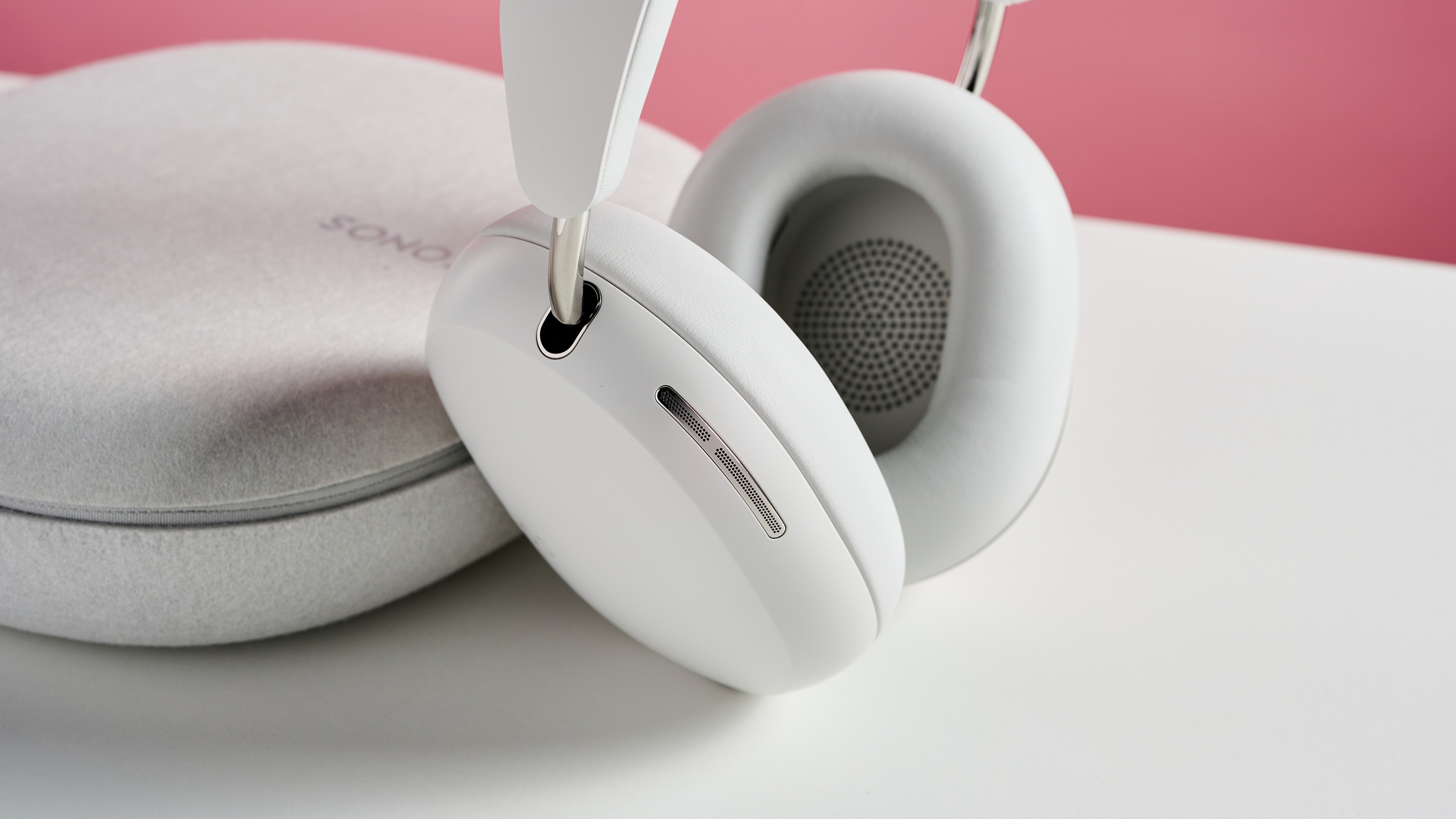
Sonos Ace review: Sound quality
- Powerful bass, aggressive mids
- Less expansive sound than Bose or AirPods Max
- Fantastic with spatial audio and movies
Like several aspects of the Sonos Ace, I have mixed feelings about its sound reproduction. I enjoyed listening to music on them, but you're about to read me picking a load of nits with their performance – which is fair enough for headphones at this price. However, you're also about to read me raving about how well they work with movies.
The Sonos Ace’s sound is extremely powerful but oddly compact compared to the Bose QuietComfort Ultra Headphones or AirPods Max. They're like a pedigree bull terrier – very defined, but more muscle than elegance.
They offer a deeper-feeling dynamic range than the AirPods Max in the crudest sense, thanks largely to their far, far weightier bass impact – and yet the Sonos Ace don't make full use of it, because of this odd compressed feeling to the soundstage. The AirPods Max have the most laid-back, naturalist sound of the three headphones I’m comparing here, and give every element of even the densest mix of sounds room to stand out. In Moloko’s I Want You, synths and strings and vocals all reach different planes of detail on the AirPods Max even in an incredibly hectic mix – but on the Sonos Ace, these elements are more stuck together, meaning none stands out quite as it should.
The Bose Ultra handle this same song with aplomb closer to the AirPods – the elements are not quite as natural as with the AirPods Max, but it’s the most expansive imaging of the three, and the most sharply detailed at the edges, so the elements still all have their own clear space to breathe. By comparison, the Sonos' detail feels like the edges are blunted.
It’s a similar story when it comes to the responsiveness of the Sonos Ace. Launching into the first shrieks of Allie X’s Black Eye, the Sonos Ace rev powerfully like an engine… but they should be rocketing off the line like a dragster instead, which the Bose do. It feels again like it’s connected to the more constrained sound – the sounds give the impressions of stumbling over each other on the start line because they’re packed a little too close together.
This is the same vibe I get when listening to St Thomas by Sonny Rollins. The crisp percussion at the start isn’t quite as sharply defined on the Sonos Ace as the Bose or AirPods, but as I’ve said before, I don’t think the Ace lack the ability to show detail. It again feels like the dynamic edges are being sanded off by the frequencies not having enough space to dance.
The relative lack of expansiveness in the Sonos Ace really comes to a head in I Believe In A Thing Called Love by The Darkness. This song spreads it wings like a bald eagle out to either side of me on the Bose when it’s mixing multiple guitars, punchy drums and the iconic falsetto. On the Sonos Ace, it beats its wings like a kestrel, all speed and fury and only the size of my head. The AirPods Max are somewhere in the middle – all the grace of the Bose, but not quite as large or powerful. Let’s call it an Osprey, for the sake of my rapidly diving metaphor.
Switching to a Hi-Res Audio connection (and source) improves the expansiveness of the Sonos Ace, I will say, and is closer to what I expected from them – that applies over both the USB-C cable and the aptX connection. However, it limited the volume significantly in both cases in a way that I would find frustrating if using them on public transport. And I still found the Bose to be broader – and they do that no matter the source.
The Bose and AirPods headphones both offer a more neutral presentation than the Sonos, though the AirPods are comfortably the flattest of the three. I don't have any issue with the Sonos coming in warm and emphasizing a powerful sound suited to pop and rock, but it's important to know, especially when the company's larger speakers tend to be come in closer to the neutral side.
As I mentioned above, this is a lot of criticism and nitpicking – the Sonos Ace are a very pleasant listen, and they do have plenty to reveal about the details of a song, in the pit of its bass, the gleam of its treble, the croak of its vocals. They're fun, and their energetic temperament is great for motivation – combined with the highly effective noise cancellation, I've rarely vacuumed so actively and aggressively.
But it's not what I'd call an audiophile-satisfying sound, even if it has some audiophile ingredients. And at this price, you need to be delivering something to check the boxes of discerning ears for music – the Bose Ultra and AirPods Max do.
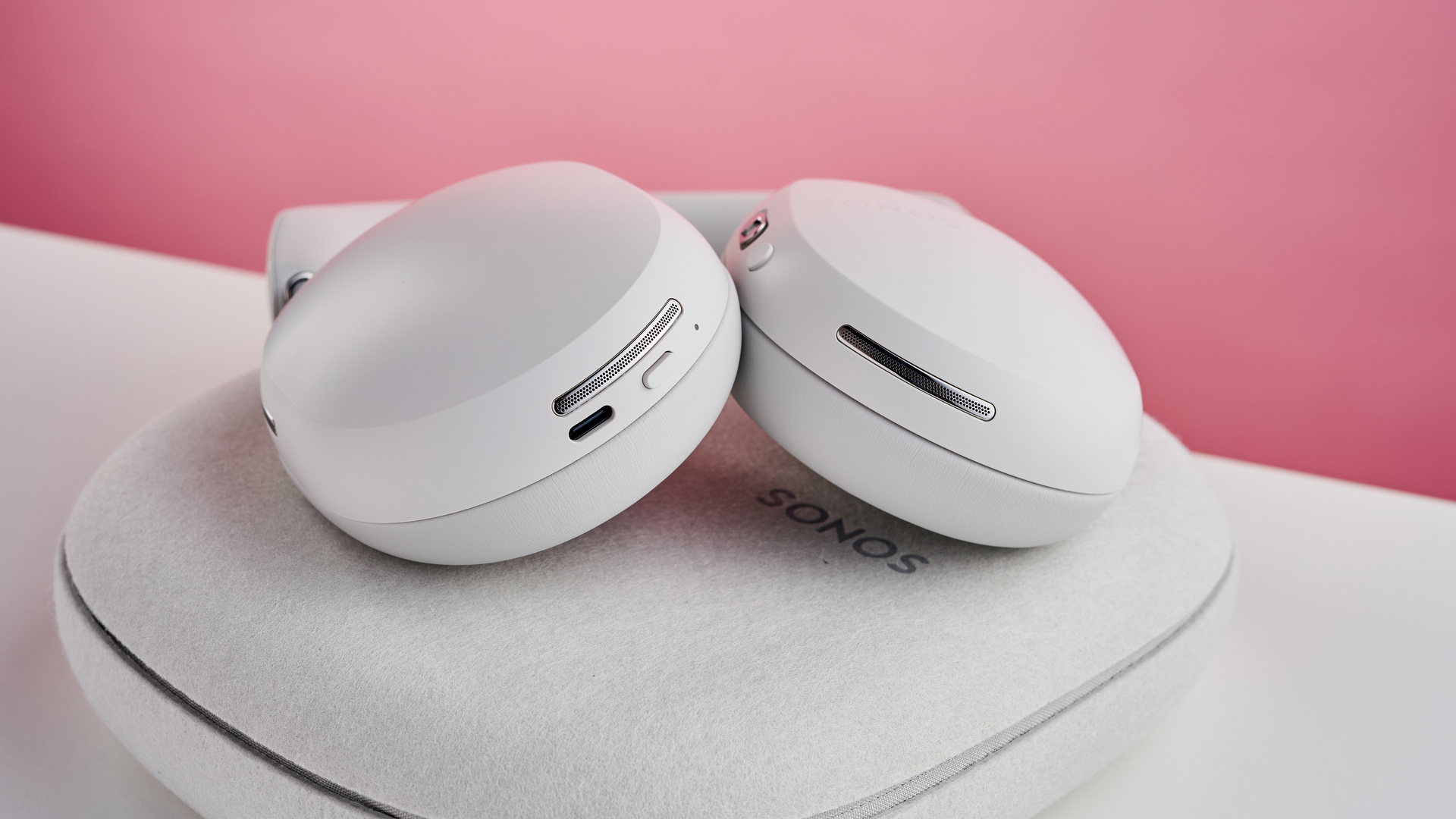
However… switching to movies turns my mild frown upside down instantly. You know all my complaints about the music not feeling like it has room to maneuver naturally? I feel exactly the opposite with movies in spatial audio – each element feels more nimble and independently calibrated than when listening to the spatial audio mode on the Bose Ultra.
Dialogue in movies is particularly clear, but still natural – it feels like having a powerful center-channel speaker elevating it. Bass impact is hefty but expertly balanced against the more mid-range stuff – AirPods Max slightly overblow the bass, and are brighter in the treble. I think the mid-loving approach of the Sonos is better for movies, and feels more like the cinematic experience I expect.
There's a great sense of connection between the front and sides in the spatial audio surround presentation, adding to that feeling of it being a soundscape, not just stereo with some head tracking. The Sonos Ace don’t handle height quite as convincingly as AirPods Max when watching the same Dolby Atmos source, but the Sonos Ace's head-tracking is absolutely perfect, and surround effects overall are just sublime. I think they’re marginally behind AirPods Max, but are 95% of the way there, and basically as good as virtual surround gets in headphones currently.
The Spinner at the start of Blade Runner 2049 flies over and then behind you convincingly, warbling bass in a way that you can feel, but isn't overwhelming.
During Brother Kwame's speech in BlacKkKlansman, the crowd's responses aren't quite all around you, but are separated out from the speaker in the center clearly in layers, far to the side.
When missiles are fired in Top Gun Maverick, they whoosh and snake from the front around to the sides and rear. They're lively, close enough to feel threatening, and sound like they have hefty thrust.
All of the above applies to using the Sonos Ace with both my iPhone (taking advantage of the Dolby Atmos support there) or with my Sonos Arc soundbar, using the TV Audio Swap feature.
I switched between using the Sonos Ace with my Sonos Arc receiving sound from my Apple TV 4K, to using my AirPods Max connected directly to the Apple TV 4K. So in both cases, the streaming source is the same – but it goes through a different processing setup for each pair of headphones.
I think the AirPods Max have a slightly clearer edge when it comes to converting from 5.1 or lower up to a spatial audio effects in this use case, but I still preferred the sound balance of the Sonos Ace enough that I’d choose to use them of the two – and they also have the advantage of taking sound from any source connected to my TV, which isn’t the case for the AirPods Max with my particular Apple TV 4K model (though they can do this with the latest Apple TV 4K 2022 model and its eARC support).
I tried playing PS5 games too, and had the same excellent experience from the Ace. The surround sound and head-tracking were essentially perfect, and there was no perceptible lag beyond any already added by using the soundbar.
Because of the improved sound balance, I think these have passed the AirPods Max as my favorite way to watch movies with headphones. Well, with one issue, which we’ll have to come to in the next section.
So when you balance my feeling that with music the Sonos Ace are good but not exceptional, but with movies they're arguably best-in-class, I end up feeling positive about their sound overall… but if your focus is music and you don't care about the movie side, I'd steer towards the Bose QuietComfort Ultra Headphones.
- Sound quality score: 4/5

Sonos Ace review: Design
- Very well made, with a premium feel
- Control buttons are easy to find and use
- Glasses wearers found them uncomfortable over time
It may not surprise anyone to learn that the Sonos Ace are a very slick and modern-looking set of headphones that come in white and black. Par for Sonos' course. They look like a cross between the Sony WH-1000XM5 and AirPods Max, in many ways – and feel like something just as premium as you'd hope for their price.
The vegan leatherette headband and earpads are plush, the hard earcup shells feel seamless, and there are stainless steel details around the microphones and for the headband slider and hinge – and Sonos made a point of noting that it put the hinge where the headphones meets the earcup inside the body, to help avoid long hair tangling in it.
The earcups don't fold, and when combined with the 0.69 lbs / 312g weight, these aren't a slam dunk for our list of the best travel headphones. The earcups do rotate, though – and they rotate to face upwards when placed around your neck, for those who have an opinion about such details.
Sonos has done some nice subtle tricks to help you see which side is the right-hand earcup without having to study them each time, so they're easy to put on the correct way round. The Sonos logo is only on the right, the right earcups have a different color inside the pad, and the control buttons are on the right.
The earpads attach magnetically, and pop right off for cleaning or replacement if the pads wear down – but their connection is solid enough that you'd never realise they're removable otherwise.
When it comes to buttons, you've got a power button on the base of the left earcup, along with the USB-C port. On the right earcup, you've got the more useful controls: a button/slider that controls playback (press it to play/pause, double to skip a track, triple to skip back) and volume (slide it up or down), and switches between Bluetooth or a connection to your Sonos soundbar by pressing and holding; and a round button that switches between ANC modes, or triggers your voice assistant of choice if you hold it.
These are easy to find with your right hand, and the slider being chunkier and with a ridge to make it easy to slide, while the button just feels like a small round nub. I'd say it's a little too easy to press the slider button while trying to slide it, but I like it as a control combination overall. Not quite as much as I like the AirPods Max's Digital Crown, but hey – audio fans can never resist a good ol' knob. I much prefer it to the combo of touch and slightly-too-small buttons on the Bose Ultra.
The weight of 0.69 lbs / 312g makes the Ace notably heaver than the Sony WH-1000XM5's 249g, but much lighter than the 385g of the AirPods Max, so they're right in the middle of the premium headphones spectrum.
And when wearing them, I think the weight feels very well-handled. At first, I found them highly comfortable, and both the earpads and headband feel like you're sinking into them, in a good way. They're plush yet substantial.
And, indeed, this experience continues for many people. My colleague Max Langridge found them to be so comfortable that they've actually converted him to using over-ear headphones – he's not usually a fan.
However, I found that the earpads pressed into my glasses arms, causing soreness as that force transferred through to my head over time. After an hour of sitting watching TV, I was desperate for a rest; if I adjusted during the time I wore them, I could stave the feeling off for longer. I gave the Ace to someone else who wears glasses, but has a smaller head than mine, and she felt exactly the same.
We both wear fairly chunky glasses, so if you have a more slimline frame, you may feel differently – and head shape may make a difference. I suspect that the need to use clamping force to help distribute the weight is the culprit here, because I would have similar issues with the AirPods Max over time. I don't have this problem with the Bose QuietComfort Ultra Headphones at all, though.
The final design touch to mention is the hard case they come with. I really like its flecked look, and Sonos assures me that the white version has been tested against picking up discoloration over time, which was my immediate concern. The concealed zip from the outside is very smart-looking, and the little magnetic pouch inside for your cables is neat (and fun to play with). The case has a fairly large footprint, but it's slimline (thanks to the earcups of the headphones themselves being also pretty slim), so is easy to slip into a backpack or travel bag anyway.
- Design score: 3.5/5

Sonos Ace review: Value
- No shortage of features overall
- Sound quality is a value concern
- Should be a slam dunk for Sonos users, but they're not
Considering the high-end features and connectivity options they come with, I think the Sonos Ace are solid value, despite their high price. They offer features missing from their Bose and AirPods competition, while matching them in almost every other area on the spec sheet, and exceeding them in battery life, so they arguably have the edge over those headphones for value.
However, my mixed feelings about the sound quality – easily the most important element – and concerns over comfort temper that enthusiasm. Overall, I'd say they make the case that they're worth the money, they just don't exceed it.
Sonos perhaps has the chance to tip the scales more in their favor in the future by adding more Sonos system features than just the home theater mode – that would make them unarguably great value for those with a Sonos-connected turntable or other components jacked into their wireless system. But that's not the case right now.
- Value score: 3.5/5
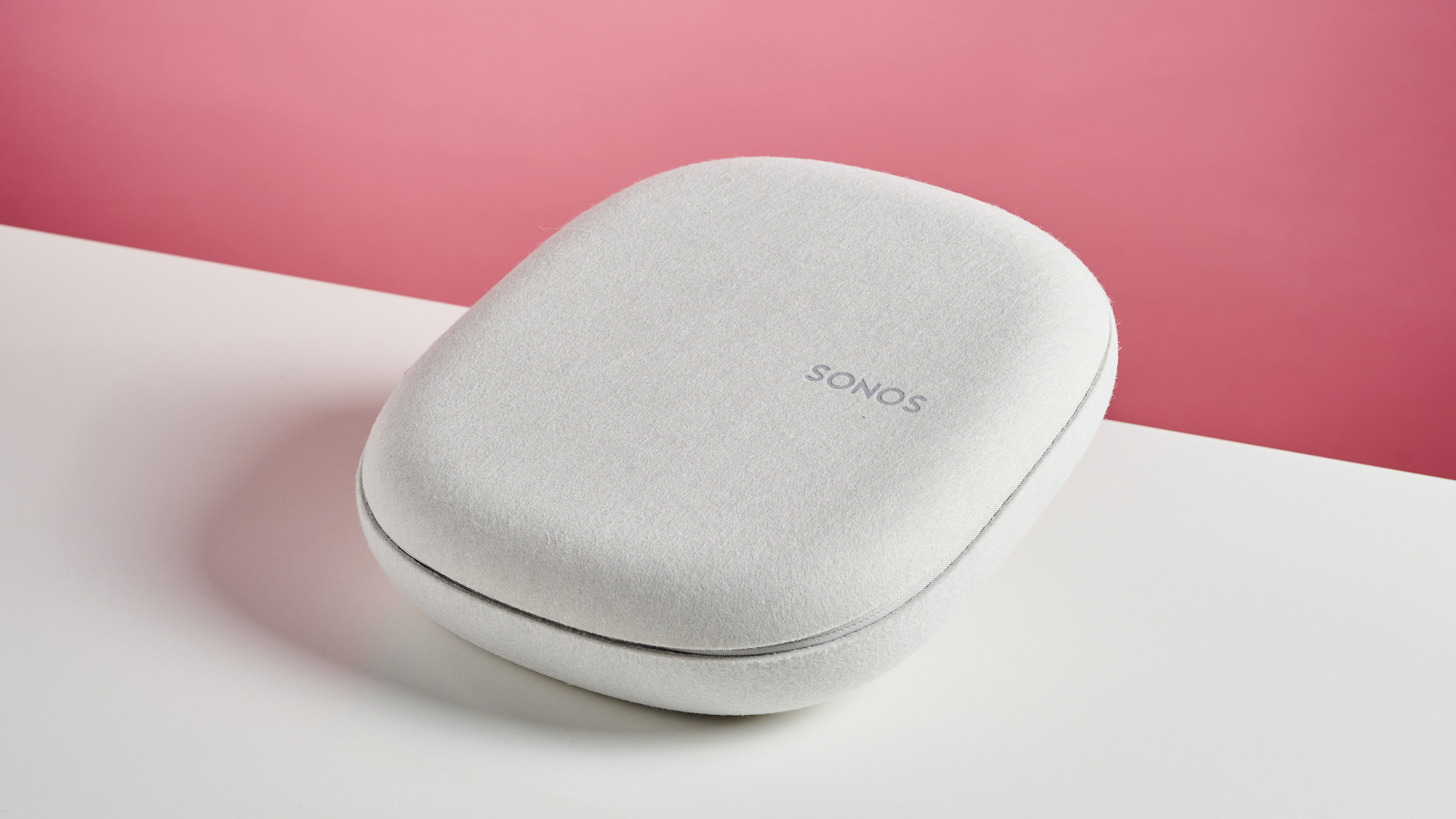
Should I buy the Sonos Ace?
Buy them if...
Don't buy them if...
Sonos Ace review: Also consider
How I tested the Sonos Ace
- Tested over two weeks
- Used with a Sonos Arc and iPhone 13 Pro mainly
- Tested with a MacBook Pro and Fiio M11S for Hi-Res support
I used the Sonos Ace at home, in the TechRadar office, and while travelling over the course of two weeks. I used them on public transport and while walking around a city to test the active noise cancellation.
I listened to music over an AAC Bluetooth connection from my iPhone, and over aptX HD from a Fiio M11S music player. I tested wired USB-C lossless audio from a MacBook Pro and the Fiio player.
I tested the TV Audio Swap feature with my Sonos Arc, using TV audio from streaming services, PS5 games, and 4K Blu-rays.







